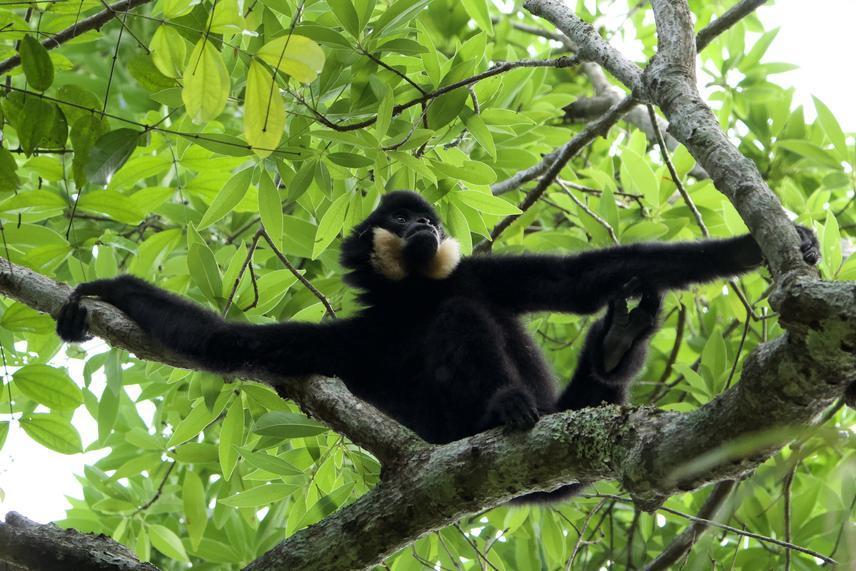Tesa Mendoza Blowey
Yellow-cheeked gibbons (Nomascus gabriellae) are classified as Endangered on the IUCN Red List, facing ongoing threats from habitat loss and poaching (Geissmann et al., 2008). In Cambodia’s Keo Seima Wildlife Sanctuary, the Jahoo Gibbon Camp offers a unique opportunity to study how wildlife tourism intersects with gibbon behavior, conservation, and local livelihoods. This project aims to explore the impact of tourism on gibbon social behavior and space use, while deepening our understanding of gibbon social ecology—particularly pair bonding, communication, and spatial cohesion.

Adult male gibbon resting in Keo Seima Wildlife Sanctuary. © Tesa Mendoza Blowey.
Over three months of fieldwork, we will study three wild gibbon pairs using focal animal sampling, GPS tracking, and continuous behavioral observation. The project will investigate key aspects of social cohesion and pair bonding, focusing on affiliative behaviors (e.g., grooming), physical proximity, and vocal communication, especially duets between adult males and females. We will quantify the frequency, duration, and timing of vocalizations, and relate these patterns to spatial proximity and movement across the habitat. This will offer valuable insights into the behavioral mechanisms that support group cohesion and reproductive success.
Simultaneously, we will assess how tourism activities influence gibbon behavior by monitoring visitor group size, noise levels, and adherence to the IUCN Responsible Primate Watching Guidelines. This will allow us to evaluate the impact of tourism on gibbon space use and social interactions, and identify strategies to minimize disturbance.
The primary objectives of this project are to:
- Examine the communication and affiliative behaviors that maintain gibbon pair bonds and social cohesion;
- Explore the relationship between vocal behavior, affiliative behaviors, and spatial proximity;
- Assess how tourism affects gibbon behavior and movement patterns;
- Evaluate current tourism practices at Jahoo and provide data-driven recommendations for sustainable management.
By integrating behavioral ecology with conservation practice, this study will generate insights critical for protecting gibbon populations while promoting responsible ecotourism. The findings will inform local management and offer a transferable model for sustainable gibbon tourism across Southeast Asia.